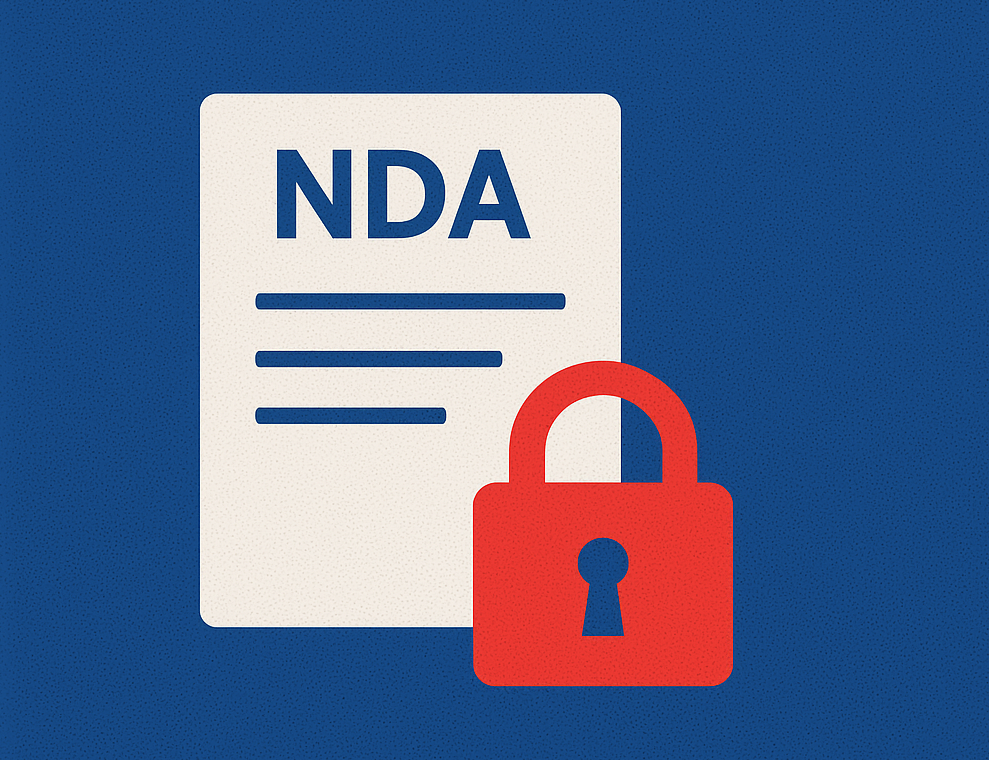SAFEs vs. Convertible Notes or Equity: Why 'Simple' Isn't Always Better

The Usefulness—and Limits—of Non-Disclosure Agreements
Non-Disclosure Agreements (NDAs) are among the most common contracts in business and among the easiest to underestimate. They appear simple, but the difference between a generic form and a purpose-crafted NDA can determine whether confidential information is actually protected or quietly lost.
What an NDA Does
An NDA establishes a contractual duty to keep defined information confidential and to use it only for an agreed purpose, such as evaluating a partnership, reviewing a proposal, or discussing a potential acquisition. It doesn’t make something “secret” by itself, but it helps prove that both sides recognized the information as sensitive and understood how it could and couldn’t be used.
Mutual vs. Unilateral Agreements
- Mutual NDAs are used when both parties expect to share proprietary information, such as in joint-venture or technology-licensing discussions.
- Unilateral NDAs apply when only one side is disclosing information, for example, when a company provides data to a consultant or potential supplier.
Download sample forms:
These are useful reference points, but only a starting place.
Why a Generic NDA May Not Be Enough
Many companies download a free NDA and assume it covers every situation. In reality, a template that seems “standard” can become unreliable once you try to enforce it or adapt it to a particular deal. The problem isn’t that NDAs are complicated—it’s that every disclosure has a different business context, risk profile, and enforcement path.
1. Mismatched Purpose and Scope
Generic NDAs often use vague or boilerplate purpose language, such as “evaluation of a business opportunity.” That may not reflect what the parties are actually doing and can lead to disputes about whether specific disclosures are covered. A solid NDA clearly defines the purpose of disclosure, the type of data involved, and how it may be used internally.
2. Missing Compelled-Disclosure Procedures
A key weakness in many off-the-shelf NDAs is the lack of a process for responding to subpoenas or regulatory demands. Without explicit notice and cooperation clauses, a counterparty could legally disclose sensitive information before you have a chance to seek a protective order. Strong NDAs require notice, allow the discloser to intervene, and limit disclosure to what’s strictly necessary.
3. Duration and Survival Mismatches
A one-size-fits-all term rarely matches the value or sensitivity of what’s being shared. Some NDAs expire before the information loses value; others promise confidentiality “forever,” which can be unenforceable. The most practical approach is to pair a reasonable fixed term (for example, ten years) with indefinite survival for trade secrets—long enough for real protection, short enough to feel commercially fair.
4. Lack of Fee-Shifting for Enforcement
When the only remedy is litigation and each side pays its own legal fees, a small company can’t afford to enforce its NDA against a deep-pocketed counterparty. Well-drafted NDAs include a prevailing-party clause that makes enforcement economically viable even when the direct damages are small.
5. Mandatory Arbitration
Arbitration is often marketed as cheaper and faster, but it often isn’t for smaller disputes, when you need urgent injunctive relief, or when you face multiple jurisdictions. For many purposes, the better solution is optional arbitration—available if both sides later agree—but with court enforcement rights preserved. That structure combines flexibility with real access to judicial remedies.
6. Return and Deletion Obligations that Ignore Modern Data Realities
In 1995, protecting confidential information meant locking a filing cabinet. In 2025, it means managing dozens of digital shadows. Most templates say “return or destroy” confidential information but say nothing about backups, derivative notes, or data incorporated into machine-learning models or analytic systems. Modern NDAs should acknowledge these realities and require deletion or exclusion of derived data wherever practical.
In short, a “generic” NDA is rarely truly protective. A well-drafted NDA doesn’t just check the confidentiality box; it fits the actual deal structure, anticipates enforcement logistics, and keeps up with how data and technology are used in business today.
Hidden Traps in NDAs You Receive
Equally important is the risk of signing someone else’s NDA without review. Counterparty-drafted NDAs often contain traps that tilt risk sharply against the signer. Examples include:
- Residuals clauses. Allow use of anything “retained in unaided memory,” effectively permitting idea appropriation.
- IP ownership reversals. Jointly developed ideas or feedback may become the recipient’s property.
- Overbroad definitions. If “Confidential Information” includes everything ever provided, you can breach it by using public information.
- Unbounded indemnities. Liability for third-party misuse can shift back to you, even if you didn’t cause it.
- Limitation-of-liability asymmetry. One-sided caps and disclaimers can make enforcement meaningless.
- “Click-through” submission terms. Online forms may include hidden IP assignment language.
- Inconsistent governing law and forum. Signing an NDA under unfavorable jurisdiction can eliminate your ability to obtain an injunction.
Bottom line: an NDA isn’t “standard.” Reviewing the other side’s draft before signing can prevent exposure that’s invisible until litigation.
Tailoring an NDA to Fit the Deal
A defensible NDA should align with:
- The relationship type (investor, vendor, employee, or strategic partner)
- The nature of the information (technical, commercial, data-driven, or personal)
- Regulatory overlay (trade-secret, data-protection, export control)
- The disclosure mechanics (written, oral, digital, API, or physical)
- The enforcement venue and remedies realistically available to you
Attention to these factors turns an NDA from a symbolic gesture into an enforceable safeguard.
Practical Takeaway
NDAs are foundational, but rarely “standard.” They are often the first legal document in a new relationship and the first to be tested if things go wrong. A tailored NDA that fits your context and counterparties is far more cost-effective than litigating a weak one later.
Before you sign or send an NDA, make sure it truly protects what you mean to keep confidential.
